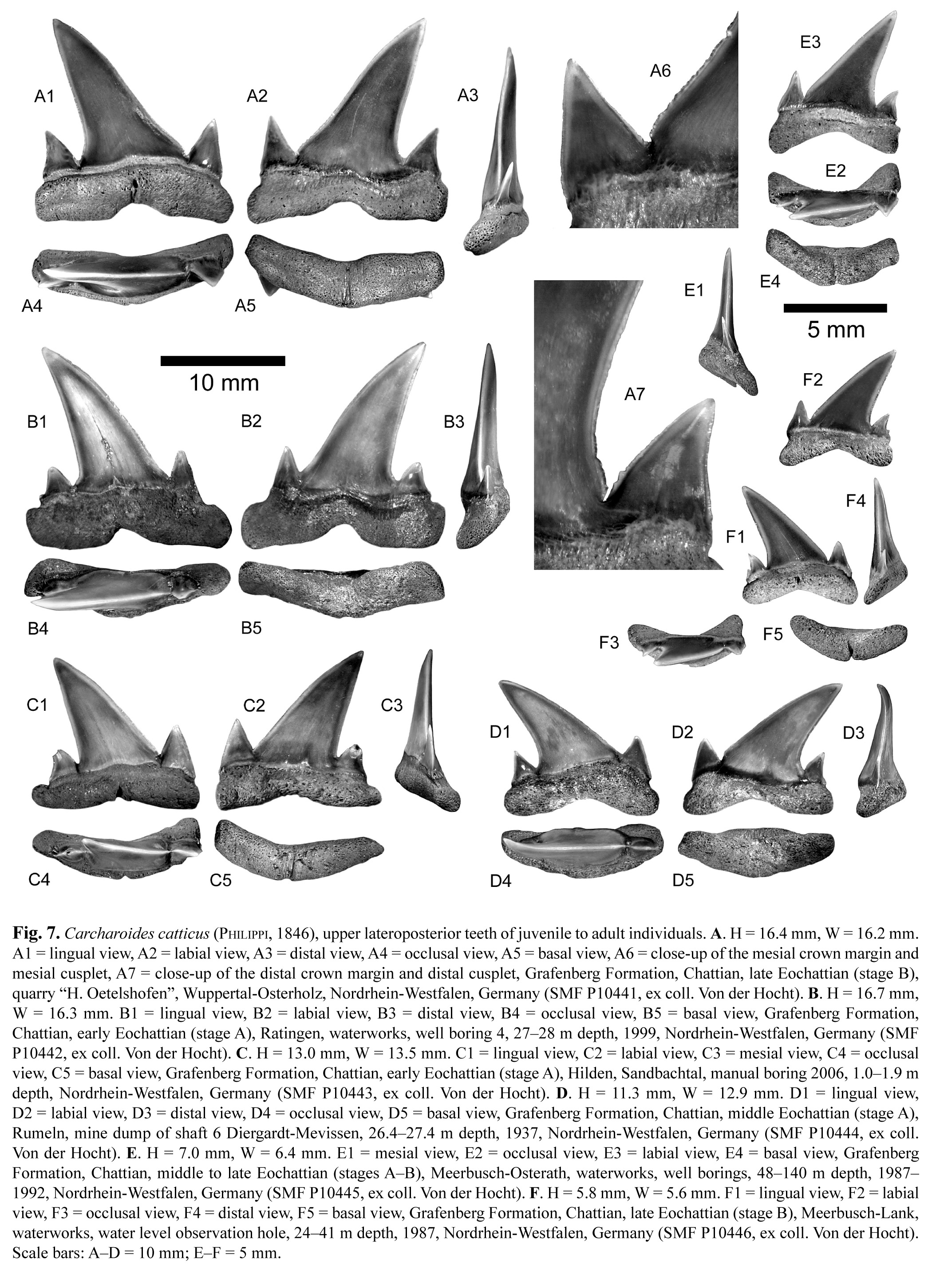
|

|
PALAEONTOS 31Price: members: 30,00 € ; non-members: 35,00 € REINECKE T., VON DER HOCHT F., GILLE D. & KINDLIMANN R., 2018, A review of the odontaspidid shark Carcharoides AMEGHINO 1901 (Lamni-formes, Odontaspididae) in the Chattian and Rupelian of the North Sea Basin, with the definition of a neotype of Carcharoides catticus (PHILIPPI, 1846) and description of a new species.ISSN: 1377-465475 textpages, 42 textfigures, 3 tables Abstract:The odontaspidid shark genus Carcharoides AMEGHINO, 1901 existed at least since the Middle–Late Eocene and became extinct in the Middle Miocene. It is represented by two nominal species, Carcharoides catticus (PHILIPPI, 1846) first described from the Kassel Formation, Chattian of northern Hesse, Germany, and the type species Carcharoides totuserratus AMEGHINO, 1901, from the Gaiman Formation, Early Miocene of Patagonia, Argentina. Based on existing collection material previously assigned to C. catticus, a new species, Carcharoides lipsiensis sp.nov., is described here from the Markkleeberg Member of the Böhlen Formation, Rupelian, formerly exposed in brown coal pits south of Leipzig, southeastern Germany. The probably lost type of “Otodus” catticus, a right upper lateroposterior tooth, is replaced by a neotype recovered from the type deposit and location near Castle Weissenstein, west of Kassel, Germany. The dental characteristics of the three nominal species are described and compared by selected morphometric parameters. Based on two sets of isolated teeth from the early to late Chattian and the Burdigalian–Langhian of the North Sea Basin, respectively, an artificial tooth set is assembled and proposed for C. catticus. The comparative study of numerous teeth of C. catticus and Carcharias gustrowensis (WINKLER, 1875) from the Sülstorf Formation, Chattian of Mecklenburg, northeastern Germany, ranging in height from newborn (2–4 mm) to adult (max. 23 mm) indicates a weak ontogenetic heterodonty for both genera. Carcharoides catticus shares several dental characteristics with sandtiger sharks Carcharias spp., but apparently has only two larger teeth in the upper anterior rows rather than three in Carcharias. Among other characters, it differs from Carcharias spp. by the dimensional ratio (heigth/width) of lower lateroposterior teeth being narrower (at the same height) than corresponding teeth of Carcharias spp. Although having been much less common than Carcharias spp., C. catticus was widely distributed in the northern Atlantic, Mediterranean Tethys and Paratethys during the Early to Middle Miocene and less frequently during the Chattian. |
|
ORDER INFORMATION:please contact us at: palaeontos@gmail.com |
|